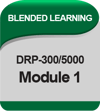
Pre-reading [BL-DR-5] [M1-S1]We get asked that question a lot. What's the difference between Business Continuity and Disaster Recovery, and what is resilience, for that matter?
What's the difference between Business Continuity and Disaster Recovery?
It's an interesting question, and there are specific industry and expert definitions. But, confusingly, they are often used interchangeably. In a broader business context, this is unhelpful.
Business Continuity

According to the BCMPedia, the definition of "Business Continuity" "aims to safeguard the interests of an organization and its key stakeholders by protecting its critical business functions (CBFs) against predetermined disruptions."
The organisation's capability to continue delivery of products or services at acceptable predefined levels following a disruptive incident."
Disaster Recovery
 The definition of IT "Disaster Recovery" is "the ability of an organization to provide critical Information Technology (IT) and telecommunications capabilities and services, after an incident, emergency or disaster disrupt it."
The definition of IT "Disaster Recovery" is "the ability of an organization to provide critical Information Technology (IT) and telecommunications capabilities and services, after an incident, emergency or disaster disrupt it."
The IT DR strategies and plans for recovering and restoring the organisation's technological infrastructure and capabilities after a serious interruption."
In a nutshell,
- "Business Continuity" is your organisation's ability to deliver its products and services.
- "Disaster Recovery" is specific to technology and how you 'recover' from an incident.
Data bars often use "IT Disaster Recovery" to clarify this distinction. An "IT Disaster Recovery Plan" can be one of several procedures within a Business Continuity plan.
Some Real-life Examples of Business Continuity vs Disaster Recovery
Key Ingredients in a Business Continuity Plan
-
Suppliers: Ensuring your key raw materials are delivered - even if there is a problem with your primary supplier
-
Building and Work Environment: Providing alternative resources to continue working and/or giving staff members remote access to systems if they cannot get to the office
-
People: Ensuring there is always enough staff to continue business operations
Key ingredients in an IT Disaster Recovery Plan
-
Fall-over Strategy: Strategies for failing-over to replica systems following a fire in the primary server room
-
Data Recovery: Processes for recovering data from backups after a malware infection
So What is IT Resilience?
Continuity does not just mean recovering from incidents. Some argue that the term "Disaster Recovery" is harmful because it focuses on (rare) disasters.
What we do in IT is ensure up time and resilience rather than "Disaster Recovery". Some examples of creating IT resilience in practice:
-
Clustering servers
-
Load balancing (improving performance and reliability by ensuring there isn't one point of failure)
-
Cyber prevention tools, e.g. anti-virus and anti-spam.
A Business Continuity Plan is the foundation for keeping every aspect of your business operational. Should trouble arise, Business Continuity measures keep the wheels turning. Disaster recovery is a key aspect of that plan, as it involves recovering your IT systems following a disruptive incident or disaster. These measures all improve your business's resilience.
More Information About IT DRP Courses
Contact our friendly course consultant to learn more about our blended learning program and when the next course is scheduled. They are the DR-300 IT Disaster Recovery Implementer [DR-3] and the DR-5000 IT Disaster Recovery Expert Implementer [DR-5].







![Register [BL-DR-3]*](https://no-cache.hubspot.com/cta/default/3893111/15b32c57-3105-4c0c-96fc-92ce68950f81.png)
![FAQ [BL-DR] [5] DRP-5000](https://no-cache.hubspot.com/cta/default/3893111/e1e30273-3d46-4a5b-9f9d-11d9457a377a.png)
![Email to Sales Team [BCM Institute]](https://no-cache.hubspot.com/cta/default/3893111/3c53daeb-2836-4843-b0e0-645baee2ab9e.png)





